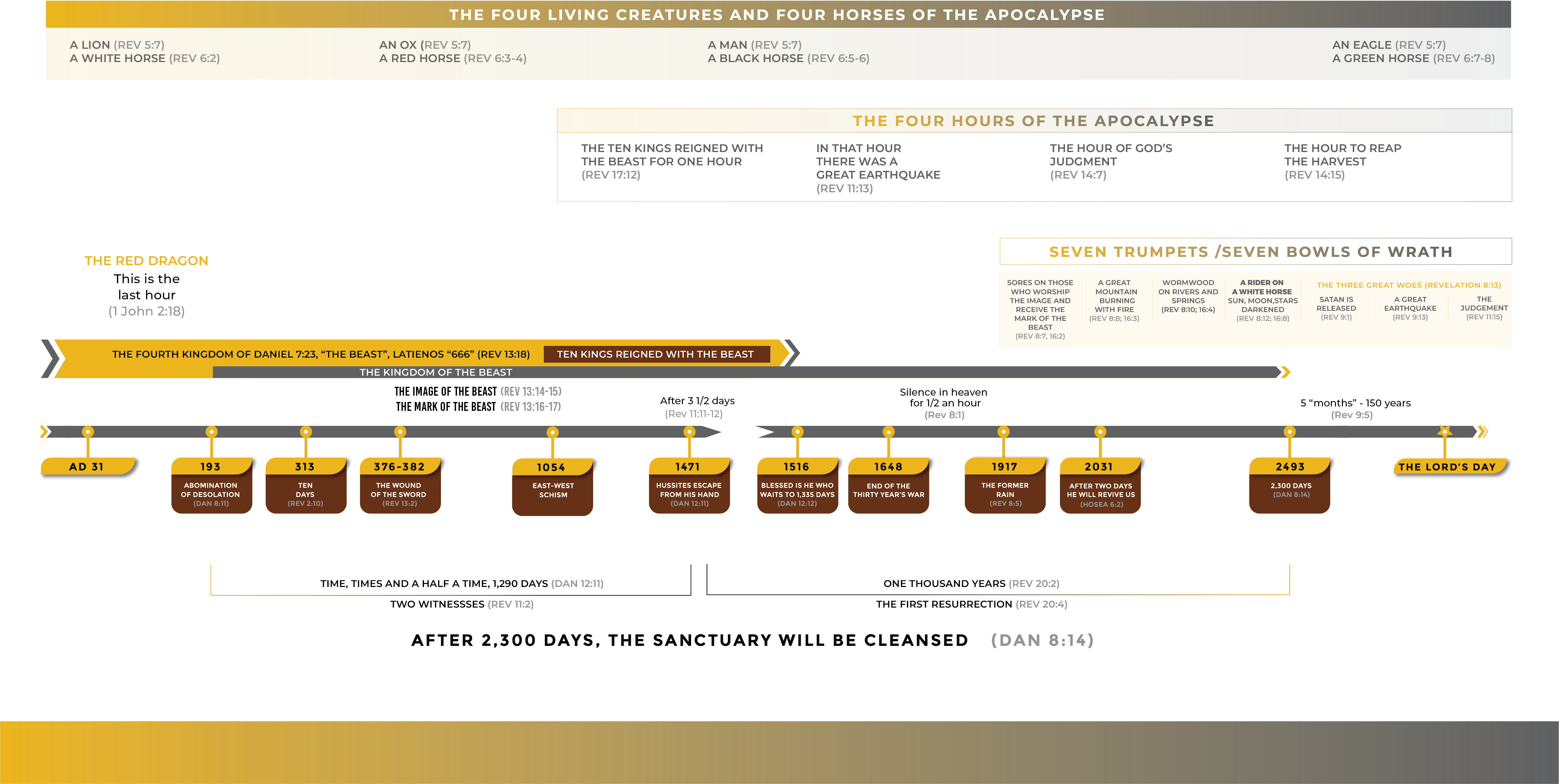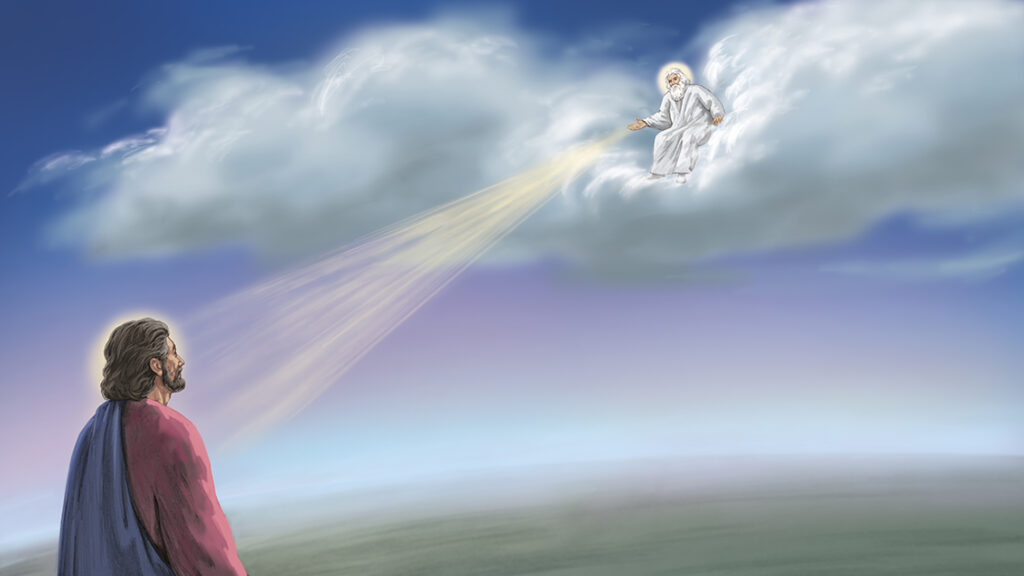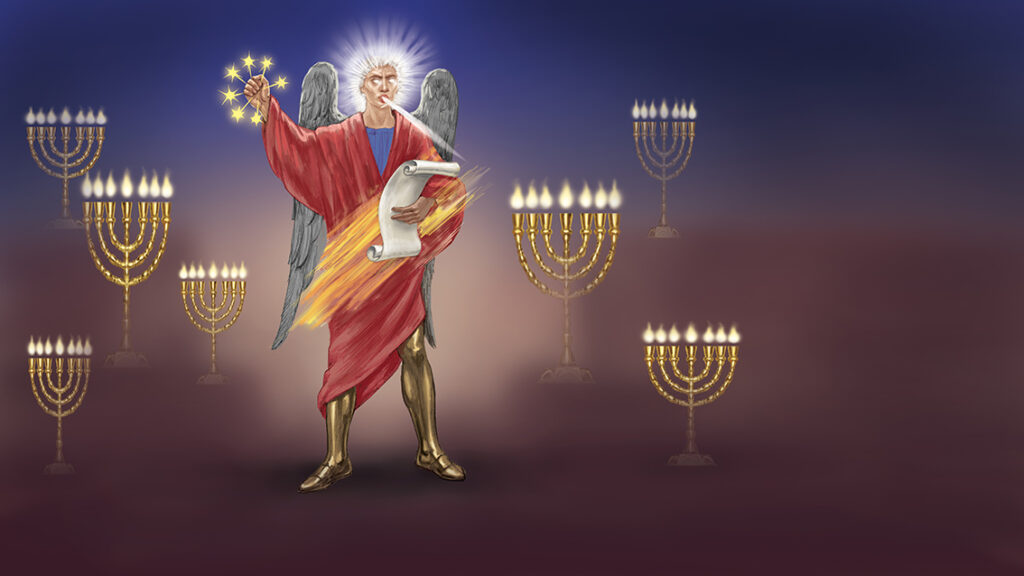

25. The Spirit of Christ as the Word
Isa 6:8, Isa 44:6, Rev 1:8, Rev 1:17
Revelation 1 demonstrates the meaning of Christ as the Word.
The Word is the Spirit of Christ, the speaker and image of the invisible God.
Isaiah saw the coming Messiah, the Lord of Hosts, who said to Him, “Who shall go for Us.”Isa 6:8 The “Us” was explained in Isa 48:16, as “the Lord God and His Spirit sent me.” The Aramaic Targum translated this as “the Lord God and His Word sent me.”
The Word was the Spirit who spoke in Revelation 2 and 3, saying, “Hear what the Spirit says to the Churches.”Rev 2:7 etc The early Church clearly understood that the Spirit who spoke in Revelation 2 and 3 was the Word. We can see this in the writing of Irenaeus, who described the Word’s rebuke of the Nicolaitans in Revelation 2.
In the beginning was the Word, and the Word was with God, and God was the Word.
John 1:1
In Rev 1:8, the Word said, “I am the Alpha and the Omega, who is, who was, and who is to come.” Here, the Spirit of Christ as the Word speaks for the invisible God, just as He did in the Old Testament.
In verse 17, the Spirit of Christ says, “I am the First and the Last.”
This brings us back to the Book of Isaiah, where the Spirit of Christ was clearly identified as the Word—the speaker for the invisible God:
“Thus says Yihvah, He WILL BE, the King of Israel,
Isaiah 44:6
And its Redeemer, He WILL Be of the Armies,
‘I am the first and the last;
Besides Me there is no God.’”
The King of the Jews was the name that Pilate put above Jesus’ cross. Thus, Jesus Christ, the Word, told the Jews, “When you lift up the Son of Man, you will know that I AM.”John 8:28 Jesus was the promised “He WILL BE,” the King of Israel and its Redeemer.
26. The Manifestations of the Spirit of Christ
A significant theme of the Book of Revelation is the image of the beast, the false image of a three-person god: a lion, a leopard, and a bear.
The first chapter of the Book of Revelation destroys this false doctrine by explaining the true relationship of Christ and God.
In verses 13–16, the Spirit of Christ appears:
• as one like the Son of Man; this explains that the Spirit of Christ was “manifest in the flesh”;
• as “the image of the invisible God,” the Ancient of Days, with “head and hair as white as wool,” in Dan 7:9;
• as the body of Christ, the Rider on the White Horse, with “eyes a flame of fire” and “a sharp two-edged sword” from His mouth; and
• as the Archangel, “with a golden sash around His chest,” like the angels in Revelation 15.
His head and His hair were white like white wool, like snow; and His eyes were like a flame of fire.
Revelation 1:14
The Spirit of Christ also speaks from these many manifestations:
• as the Son of man, saying “I was dead and behold, I am alive forever”;
• as the Word, the image of the invisible God, saying, “I am the First and the Last”;
• as the Body of Christ, with “the sound of many waters”; and
• as the Archangel, “with the seven stars in His hand.”
The apostle John’s explanation of Christ continues throughout the Book of Revelation. In Revelation 2 and 3, the Angel was called “the Spirit.” This Angel of God was the Spirit of Christ. In Revelation 3, John called Christ “the beginning of the creation of God.”


